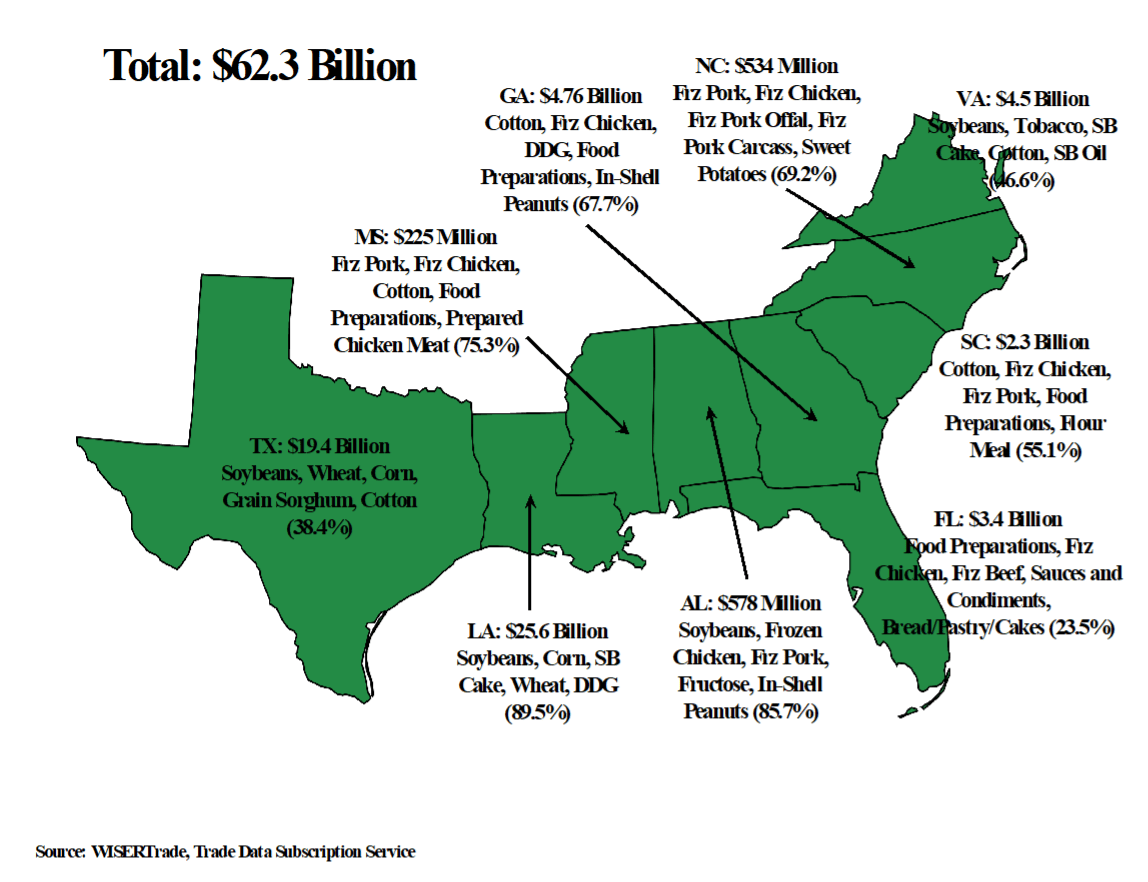U.S. agricultural exports are projected to reach a record of $183.5 billion in 2022, up $34.4 billion from 2020 and $6.5 higher than 2021. This increase is primarily driven by higher exports of most commodity groups with oilseeds and products leading the way (ERS-FAS/USDA). Overall good commodity prices are the main reason for this record-setting value of exports with soybean exports reaching $31.3 billion. Overall grain and feed exports are projected to reach $42.9 billion led by higher wheat as well as feed and fodder forecasts. Horticulture product exports reaching a record of $38.5 billion is partly driven by tree nut export projection while cotton reaching its second-highest level at $8 billion. Finally, livestock poultry and dairy exports are forecast at a record $39.2 billion, with gains in beef and dairy more than offsetting declines in pork. Mexico is forecast to overtake Canada as the second-largest U.S. agricultural market with a projection of $27 billion, while Canada is projected at $26 billion. China is expected to remain the largest market with a forecast of $36 billion.
U.S. agricultural imports in 2022 are forecasted at $172.5 billion, up $25.8 billion from 2020 and $1.4 billion higher than 2021 due to expected increases in livestock and beef products, horticultural products and the new “Agricultural Products” definition and in this case distilled spirits. The U.S. agricultural trade surplus is expected to increase to $11 billion in 2022. Recent global events, mainly the Russia-Ukraine war could have significant impacts to these forecasts.

Ribera, Luis. “U.S. Agricultural Trade with Plenty of Uncertainties but Expected to Hit Record Numbers in 2022“. Southern Ag Today 2(13.4). March 24, 2022. Permalink







